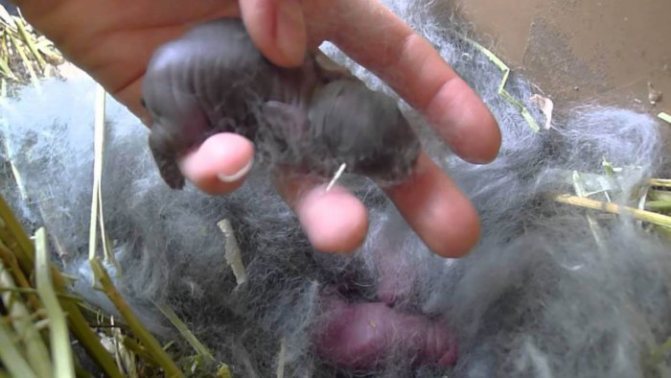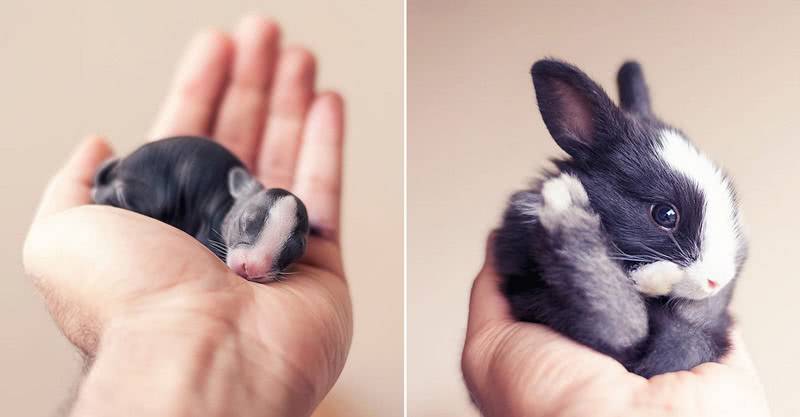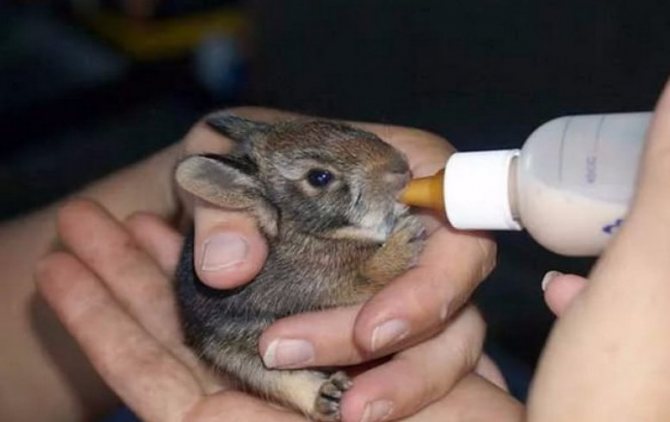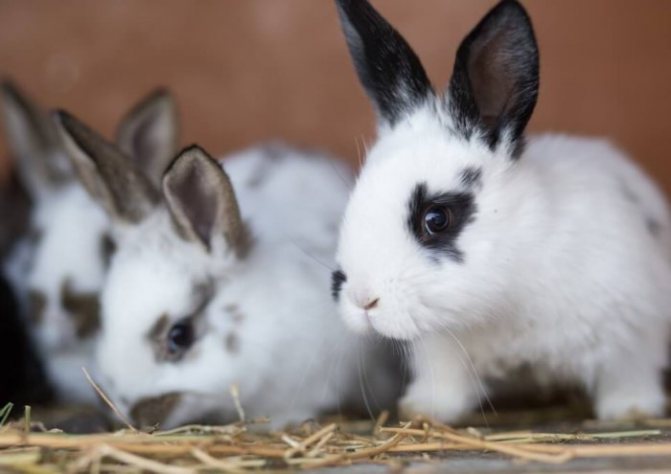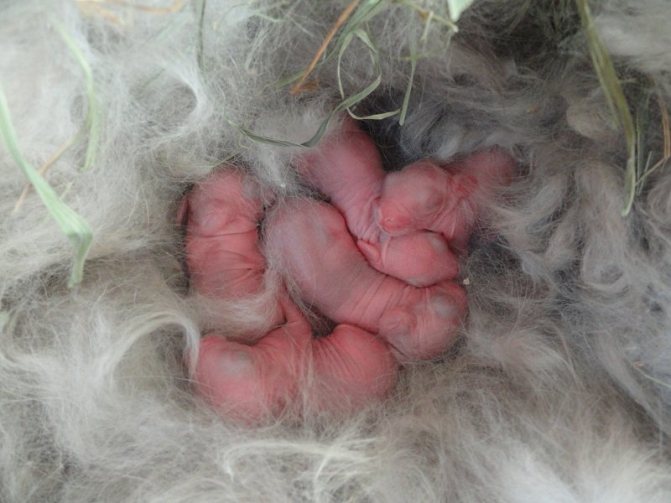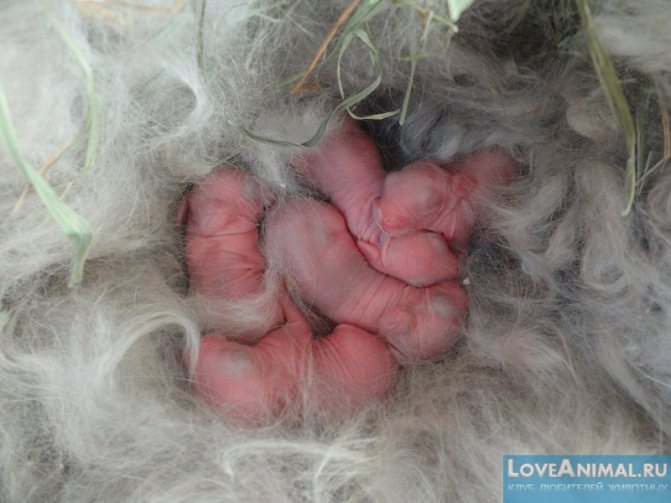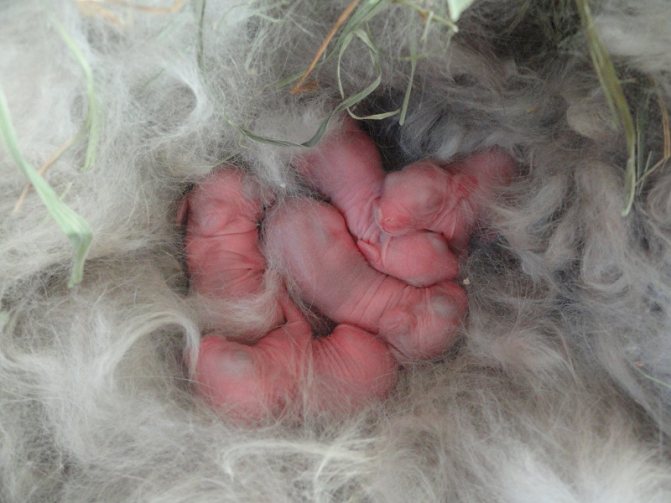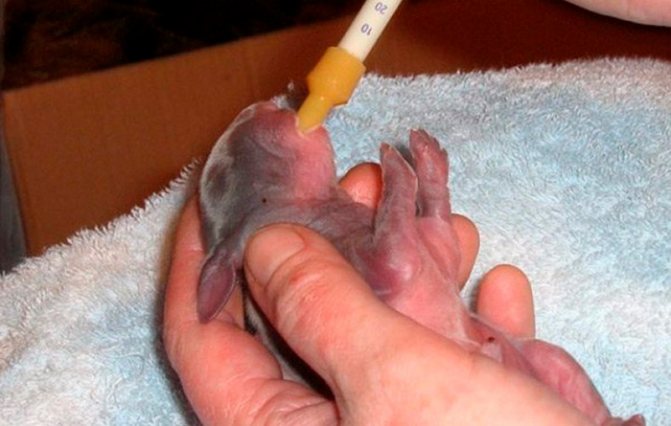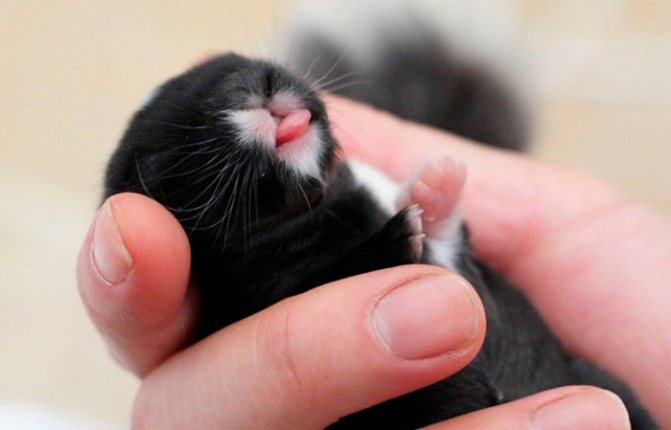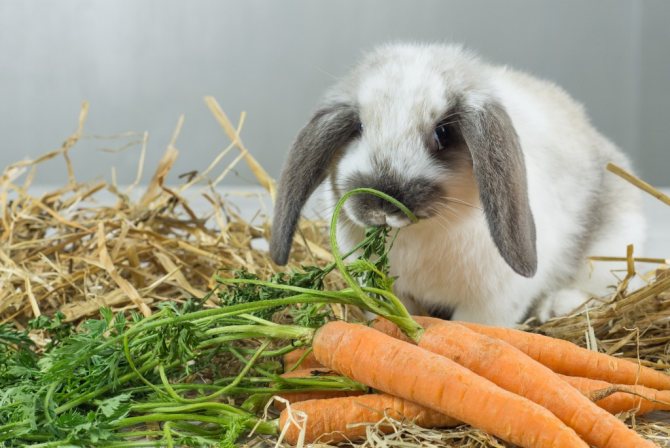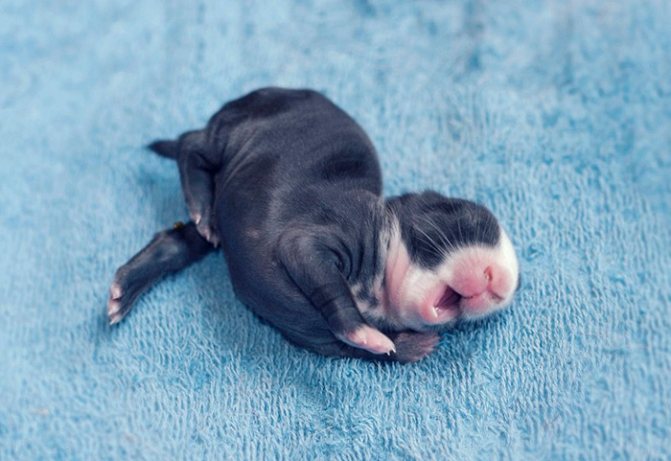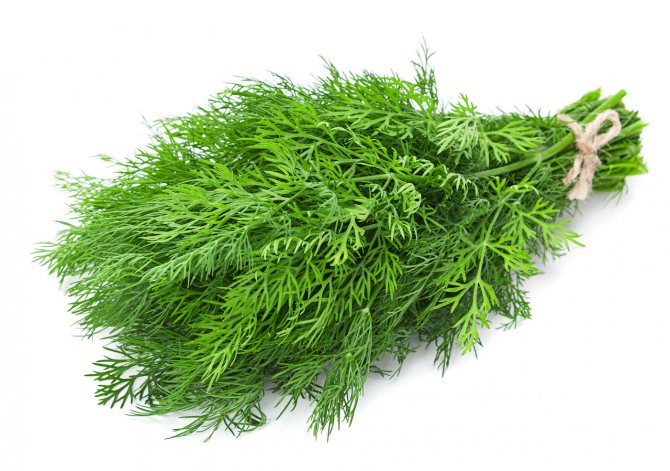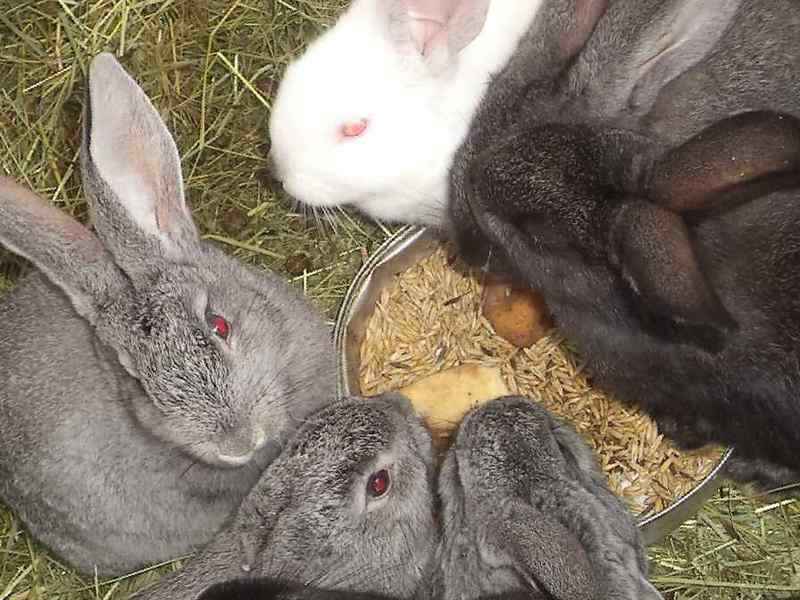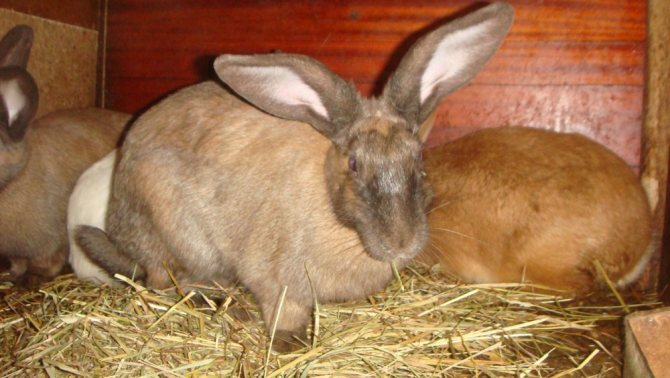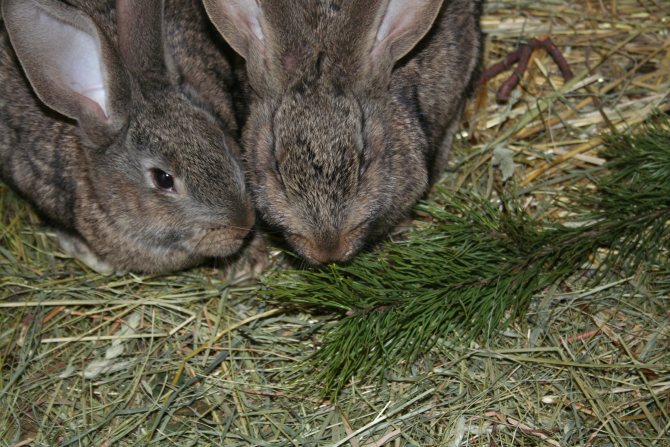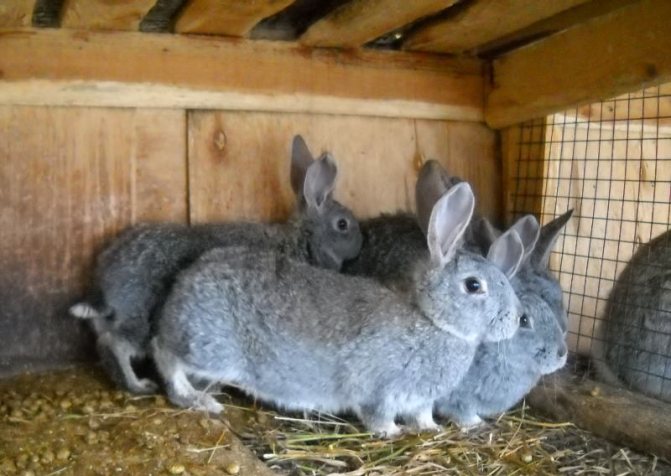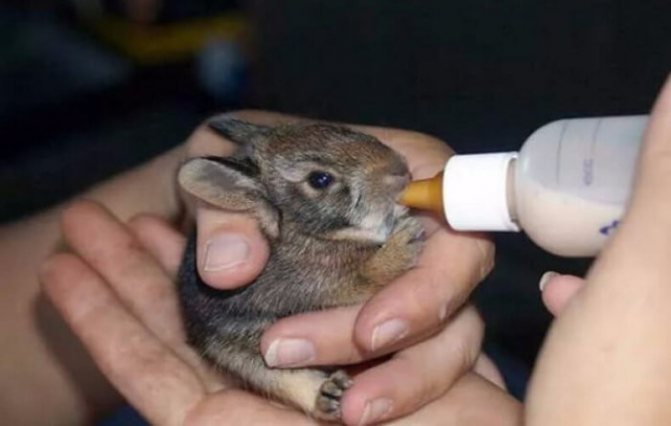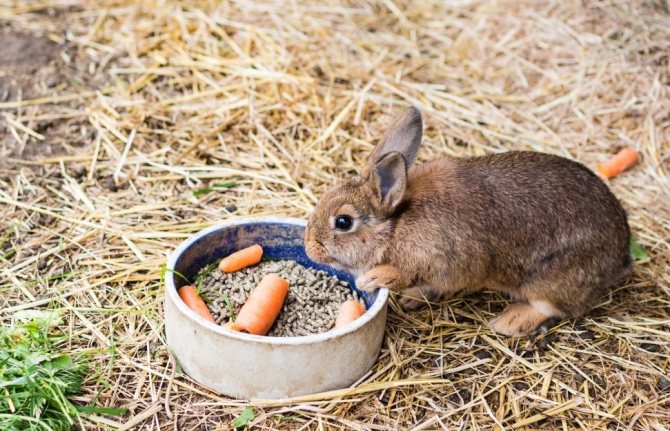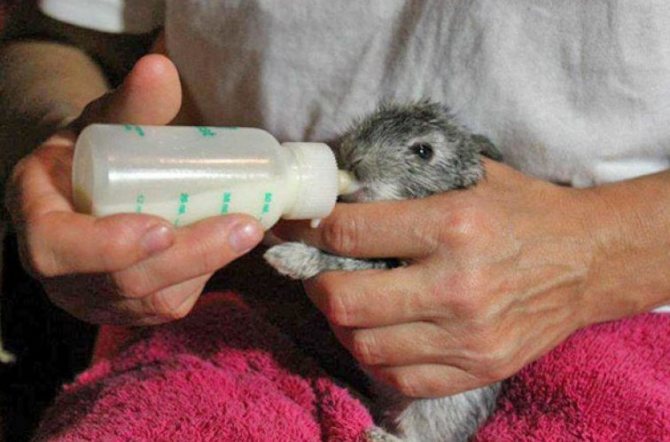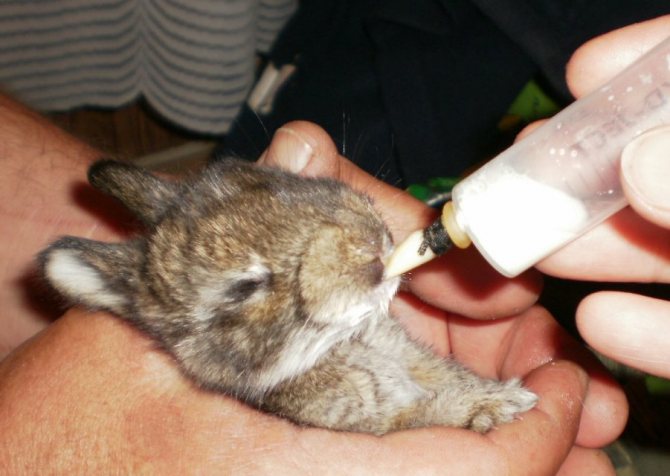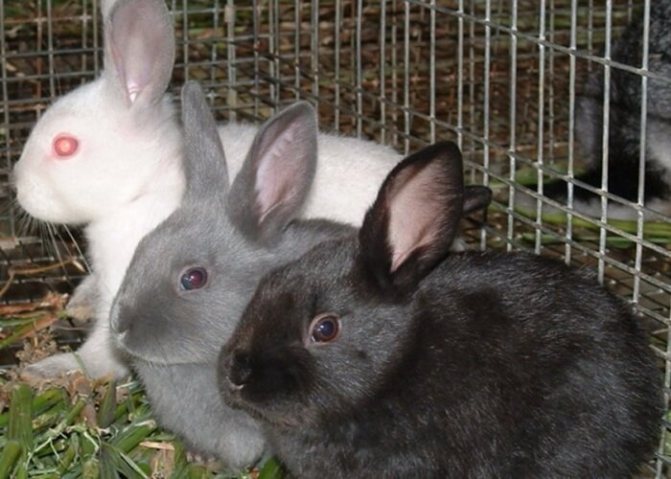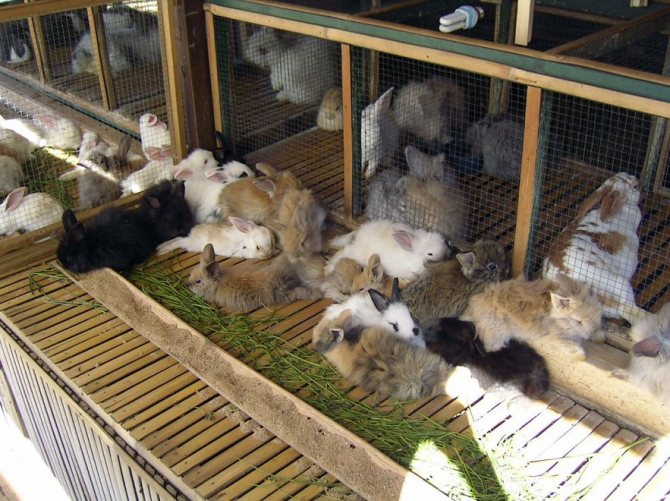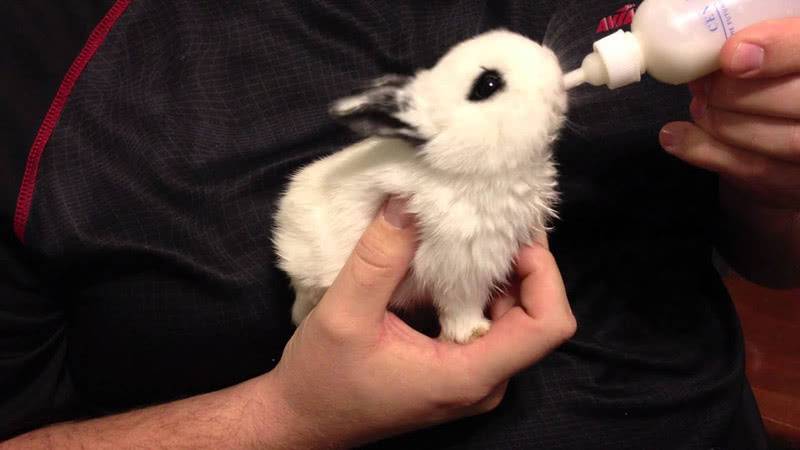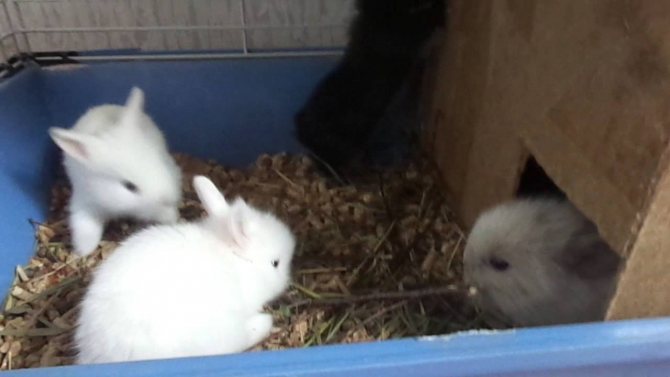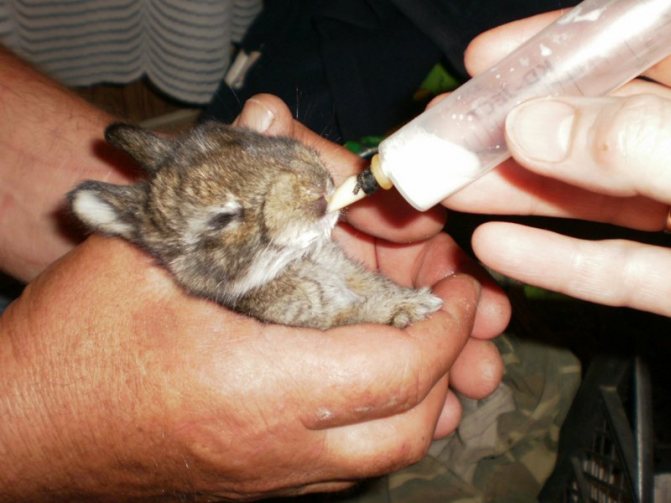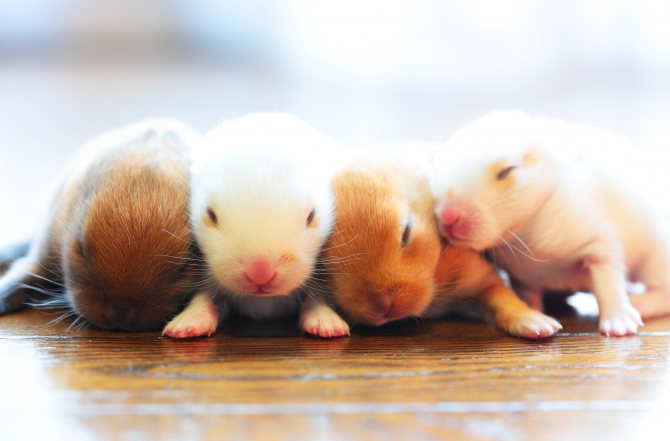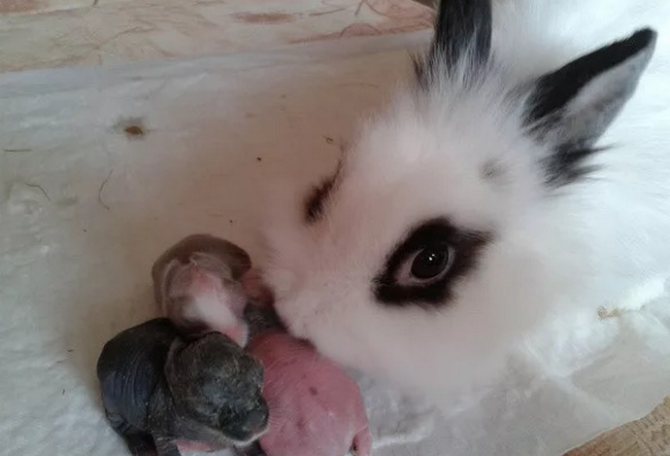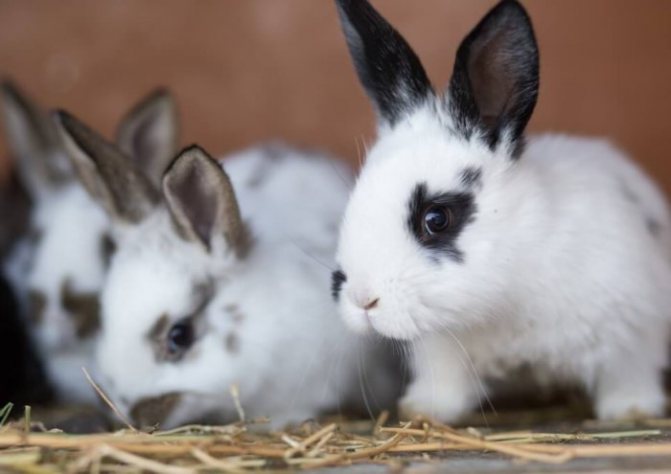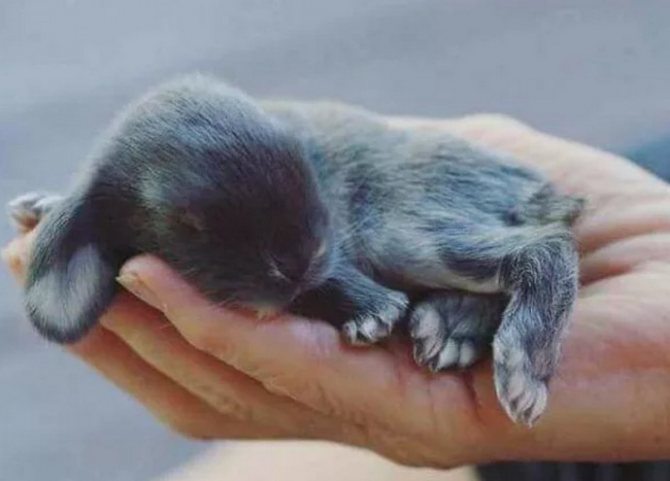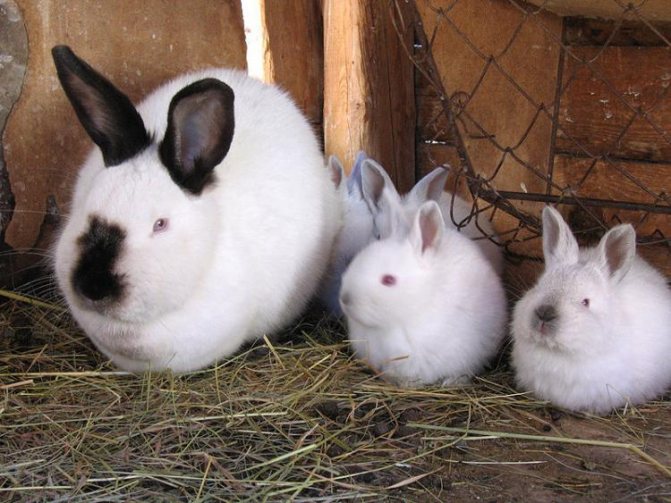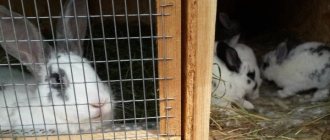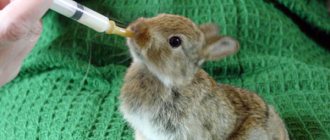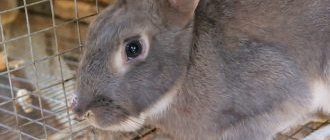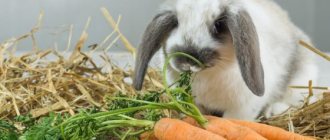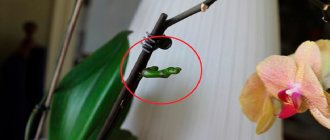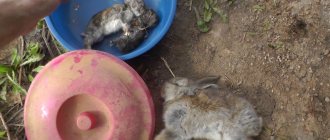Livestock »Rabbits
0
1232
Article rating
Newborn rabbits are in no hurry to leave the nest and are completely dependent on the mother. Caring for the offspring is the primary task not only of the female, but also of the farmer who is engaged in breeding rabbits at home.
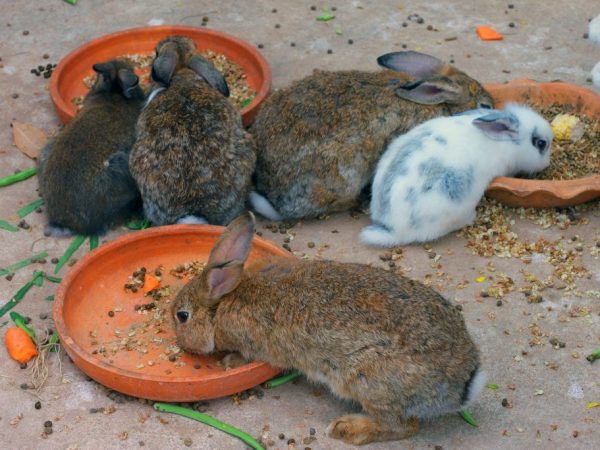
Rabbits
Small rodents grow up quickly and assimilate in a common enclosure, if caring for fluffy animals is not satisfactory. How are rabbits kept in small farms?
What should be done on the first day?
If the rabbit dies or refuses to feed the newborns, then to save the situation there is only 24 hours (most often the female begins to feed the cubs only on the second day) - only during this time the babies can do without food. Then the rabbits begin to weaken quickly and will not be able to suck on their own, and it will not be possible to save them.
The way out is artificial nursing. It is costly and troublesome, requiring skill and knowledge, but this is the main way to save offspring. It is necessary to feed the rabbits in this way until the moment when they can not eat themselves.
You should be prepared for the fact that all the cubs cannot be saved, and this does not depend on the amount of effort made - this must be perceived as a natural process.
Is it worth taking the rabbits in your arms
This question is quite important for rabbit breeders. There is a misconception that newborns should not be touched categorically, otherwise the female will leave the nest and will not take care of the offspring. The owner must inspect the nesting house no later than a couple of days after the birth of the rabbits. This event is important for determining the number of young born and the possible appearance of stillborn animals.
Dead rabbits must be removed from the nest and replaced with abandoned babies, if any. In the event that the newborns simply froze due to the low temperature index, but are still alive, they need to be placed in a warm place.
Before inspecting the nest, it is necessary to transplant the female into an empty cage and only after that inspect the rabbits. The fact is that the rabbit will begin to worry when a person appears, will run around the cage and can trample the young.
Before inspecting the nesting house, the owner must thoroughly wash his hands using odorless soap, in this case it is recommended to choose a household one. It is also worth refusing to use perfume and deodorant: their pungent smell may not please the rabbit (it may remain on the offspring). In most cases, in experienced breeders, females calmly respond to inspection of the cage space by the owner or farm staff.
If the female is dead
A possible option is to find a nurse for the babies (if there is a female whose cubs differ in age by 1-2 days), but you should be aware that she may refuse to feed the rabbits. In this case, only artificial feeding of the young can help.
The first thing the owner needs to do is warm up the brood. For this, a small cardboard box or box is suitable, laid out from the inside with an old woolen thing (you need to form a kind of nest from it). The cubs placed in the box should be covered with something warm on top.They will keep warm by snuggling against each other.
To heat babies at home, you can use a lamp (ordinary, tabletop with an incandescent lamp and the ability to adjust the height). Install it over the socket (box) so that the heat from the lamp pleasantly warms the hand outstretched. At night, you need to turn off the lamp, put a heating pad wrapped in a clean cloth in the box for the rabbits.
If the female before death managed to feed the newborn at least once, his chances of survival are quite good, because substances that trigger the immune system have entered into his body with breast milk.
Newborn fluffy care
It is important not only to maintain the correct temperature in the cage, but also to check the food and water that the females drink.
The rabbits are kept in a separate cage (another enclosure dedicated to the whole herd) until they get stronger. Maintain the temperature in the rabbitry at up to 18 ° C. Regardless of what time of the year the female gives birth, it is necessary to maintain the temperature regime in the aviary. Rabbits that develop fever and fever are kept in a cool cage.
The cub will survive the coldest winters and hottest summers with a caring mother, if the farmer provides all the necessary conditions:
- The nest is checked at least once a day. If there are several rabbits in a single cage, all rodents should be examined. If the baby is gaining weight worse, the amount of vitamins in the complementary foods should be increased. You should not rush to plant the young.
- For the first couple of days, the young are protected from any draft or hypothermia. Due to the low temperatures in the aviary, the ears and legs of the young are frostbitten. The situation with the mother of rabbits is even worse: a healthy mother of furry develops diseases that worsen the work of internal organs. Protecting the rabbit is the primary task of a farmer who cares about his own farm.
- The mother should be handled carefully, because from the first days after giving birth, the rabbit behaves aggressively towards a person. Do not disturb the female once again.
- If you scare a rabbit, you can harm both the female and the young. How quickly the rabbits grow and get stronger depends on the first steps of the farmer.
As soon as his eyes open (in the first 7-10 days), the rabbit looks closely at the world around him, examines the space in which he will have to live. For a newly born female, special conditions are needed without harsh sounds and noise. You can pick up rabbits that have grown up. Do not disturb the rabbit once again. A good scent of rodents helps the mother to smell foreign odors from the human hand. How often can the young growth cage be cleaned?
It is possible and necessary to clean the enclosure, ventilate the place where fluffy rodents live, but not more often than once a day. For a complete cleaning of the cage, the young and the female should be deposited. Such human behavior brings a lot of stress to the rabbit. If you can avoid unnecessary irritability of animals, then problems with young animals will not arise. At any age, rodents need care and attention from the farmer.
If the female does not have milk
Usually, the rabbit begins to feed the cubs one day after giving birth, (some - after 36 hours). To check whether she is feeding the newborns, you should examine the rabbits - a rounded, dense abdomen will testify to the abundance of milk. Hungry Cub:
- inactive;
- reacts poorly to the environment;
- has a flabby and sunken tummy;
- almost does not respond to touch;
- the skin is gathered in folds from a lack of moisture in the body.
If the rabbit does not have milk (with a slight pressure on the nipples, milk or colostrum is not separated), you need to artificially feed the babies.
To support the body, you need to drop a little syrup or honey into the mouth of the rabbits to equalize the blood sugar level.This will give a little time to prepare the formula that replaces breast milk.
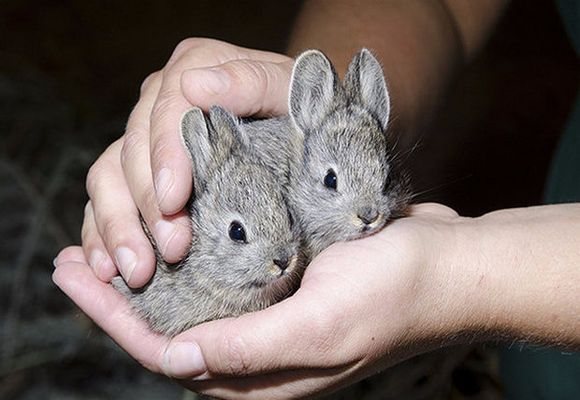

Artificial feeding
Young rabbits are fed several times a day, at certain times. You need to start and finish the process with a light massage of the tummy and calf - this stimulates the digestion and emptying of small rabbits (this is what the female does when licking the cubs).
In order for the cub to empty, you need to massage the rabbit's body with a cotton pad soaked in warm water exclusively in the direction from the navel to the tail (this will allow feces and urine to escape). If this is not done, the animal may die. The massage should be done until the cub is 14 days old.
How to replace rabbit milk?
Baby rabbits grow faster than the young of other domestic animals, and this is due to the composition of the female's milk - it is very thick, has the largest proportion of valuable components.
Rabbit milk contains four times more protein and three times more mineral components than cow's milk. According to laboratory data, it contains 13% protein, 0.7% calcium, 15% fat. You can replace rabbit milk:
- cow's milk;
- goats;
- dry mixes for dogs or cats.
Cow's milk is the most accessible product, but its composition is very different from rabbit's milk, therefore, condensed milk is added to it to achieve the desired concentration and nutritional value. Goat milk has the desired consistency and nutritional value, it can be given in its pure form.
For babies who are one month old, a mixture of milk and herbal granules is suitable.
It can be given to healthy, gaining weight rabbits, mixing granules and milk must be strictly according to the instructions (each manufacturer indicates a different proportion).
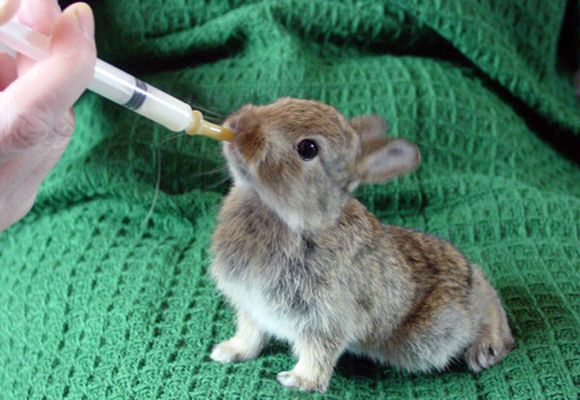

Milk mixtures that replace rabbit milk are not produced, for artificial feeding it is replaced with mixtures for domestic animals. They need to be diluted with less liquid in order to reproduce the desired density. Powdered milk mixtures are suitable for rabbits from the first hours of life.
Okrol
The rabbit's pregnancy lasts 28–31 days. A week before the birth, the female begins to prepare for it. She tears the fluff on herself, fusses, drags hay into the mother plant. Inexperienced rabbits do not always care about arranging the nest. If the mother-to-be is not busy preparing for the birth, the farmer should do it instead:
- install the mother house in the cage;
- pinch the rabbit's fluff in the chest and abdomen;
- put a bed of straw and down in the nest.
Okrol usually begins in the evening or at night. Human help is not needed. The female will do everything herself. Within 30-60 minutes, all the rabbits will be born.
Attention! After giving birth, the rabbit needs a lot of clean drinking water. If she is not in the drinker, the female can destroy the offspring.
The breeder's job is to provide peace to the rabbit family. It is best to place the cage in a safe, quiet place so that the mother and babies are not stressed by hearing loud noises. There should be no draft in the room.
How to feed properly?
When artificial feeding, you must adhere to the following rules:
- milk must be fresh, the mixture is prepared for 1 day and stored in the refrigerator;
- before feeding it is heated to 37 ° C;
- feeding utensils must be cleaned with hot water.
You can give milk to a rabbit using a syringe without a needle, a pipette or a special kit for feeding pets. Older animals will need a nipple and bottle. Before giving the mixture or milk, you need to conduct a preliminary test - give the baby some food, and see if the body will accept it without problems.
You need to feed the baby little by little - he cannot regulate his appetite and eat as much as he can.Therefore, milk should be given in small portions, up to 5 times a day, making sure that the baby's belly does not overflow.
During feeding, the rabbit should be kept upright, milk should be given drop by drop. You cannot pour milk into the rabbit - it drips onto the lips, and he must lick the drops on his own.
Feeding by day
The minimum food rate that can be given to a calf at a time from birth to 5 days is 1 milligram, the food rate per day is 5 ml. If the food is well absorbed and the weight of the animal becomes more, the portions can be gradually increased to 3 ml.
The amount of milk should increase over the next 10 days. A single serving should be up to 30 ml., The number of feedings is reduced to 3. The weight of the animal is increased to 250 grams.
From the age of 2 weeks, the milk rate is gradually increased to 60 ml., The number of feedings is reduced to two times. Monthly rabbits weigh 0.5 kg. Complementary foods include finely grated vegetables, fruits and hay (after 21 days of life).
At the age of one and a half months, you should begin to wean the rabbit from milk, but this is advisable only when the cub is gaining weight well.
The nutrition of two-month-old rabbits should correspond to the diet of an adult animal and include hay, vegetables, special mixtures and oats (seasonal fruits can be included in the daily diet). There should always be fresh water in the cage.
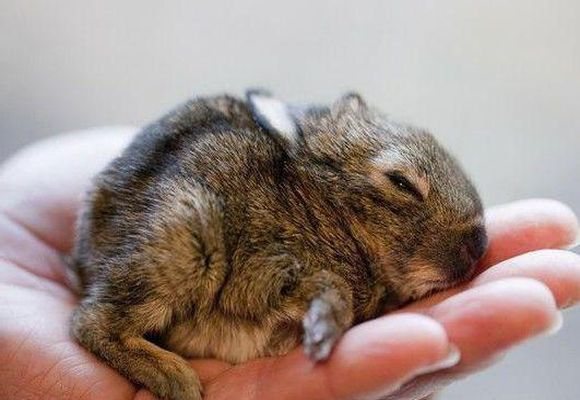

The first days of rabbits life
Rabbits begin to crawl out of the nests on their own no earlier than on the 7-8th day of life. Fluffy rodents grow in different ways, depending on the breed and the food they eat after being removed from the rabbit. Feeding of young animals ends on the 40th day. If the rabbits are not ready to hatch, the hatching period is extended by no more than a week. In the first days of life, rabbits look lethargic, weak. The fur appears in a day or two, the eyes open after 10 days. Small rodents with 16 incisors are born.
So that the mother does not trample the young, you should not equip small nests. The more space the rabbit and small rodents have, the faster the young grows. Fluffy animals start to get sick if there is little space in the cage or a lot of droppings that the farmer did not remove in time. If the rabbits squeak for a long time, the female rabbits abandon the brood and become aggressive. It is in the farmer's best interest to take care of the health of the brood. If you plant other people's rabbits from another rabbit to the newly-born mother, the young may die. Females rarely accept alien rodents.
A photo of small rodents demonstrates how quickly the young grows over with fur. Any other rodent takes much longer to develop. To prevent the female from scattering large rabbits, it is necessary to wean off the grown brood in time (it should be transplanted into separate enclosures). The temperature and purity of the cage are determined by a person who helps newborns grow faster.
Control of the sufficiency of food
It is necessary to constantly monitor whether the offered food is enough for the rabbit. A good indicator for this is belly filling. A tight and rounded belly indicates that the rabbit has been well fed. A well-fed cub is active and calm, lethargy or irritation indicate a lack of diet. A sign of malnutrition is a poor night's sleep of a bunny.
Discharge should be regular, normal rabbit feces should have a greenish color, if digestion is disturbed, they will be brown.
It is best to start your first food with finely grated fresh carrots and chopped hay. Artificially fed rabbits should be able to eat all types of food in 30 days, drink independently from a drinking bowl after 45 days.
It is quite difficult to feed rabbits on their own who have refused without a mother - it will require a lot of effort and time. Objectives can be achieved by keeping the litter clean, sterile in formula preparation, and mandatory tummy massage at every feed.

